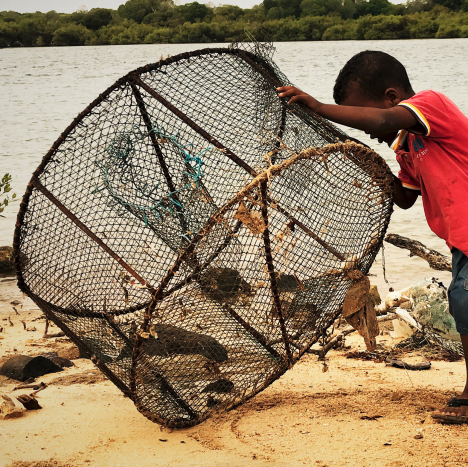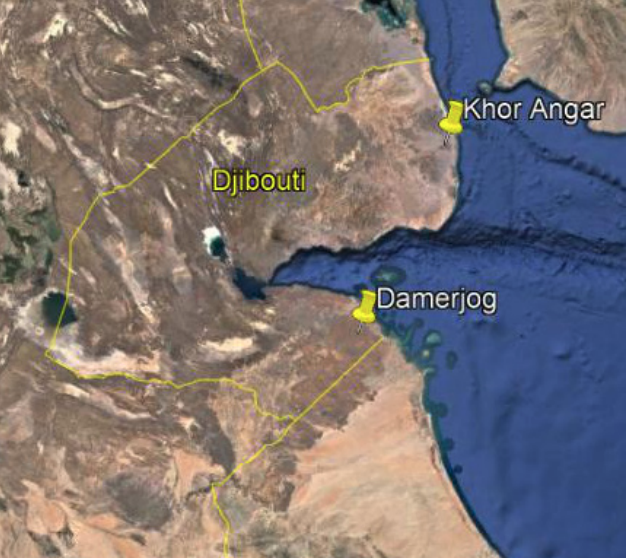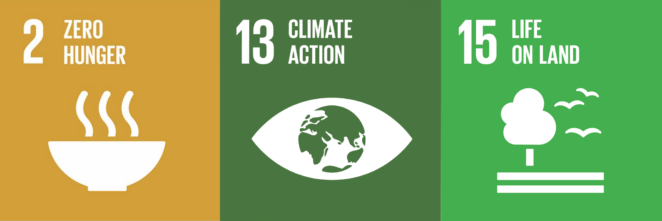Building Resilience in the Most Vulnerable Coastal Zones in Djibouti

Introduction
Djibouti is a small arid country where the availability of water is a key development constraint that inflicts crops and livestock. 85% of the 890,000 Djiboutians live in urban coastal areas, but these regions are showing severe signs of degradation from climate change.
The project was located in two sites: Khor Angar in the North (pop. 3,500), where mangroves that once protected villagers from floods are damaged, and Damerjog (pop. 600) in the South, where communities face rising seas and saltwater destroying their crops.
The project piloted approaches for rehabilitating degraded watersheds and wadi shores to reduce seawater intrusion and floods. Activities were designed to ease pressure on coastal buffer ecosystems like mangroves and increase incentives for ecosystem management (sources of fuelwood, fishing, agriculture, and ecotourism development).

For more information on this case study, please download the pdf from the right-hand column.
Links to SDGs

SDG2: 60 fishermen benefitted from fishing kits and improved knowledge on sustainable fishing techniques for shrimp, clams and fish. 60 household benefitted from crop gardens and solar water pumps.
SDG13: The project installed 5 automatic weather stations that supply live data across the country, allowing communities to prepare in advance for extreme weather. 2 district-level adaptation plans were produced, covering over 78,000 people.
SDG15: The project established 4 tree nurseries, cleaned 50ha of degraded mangrove, and planted over 40,000 mangrove trees. No-take zones were established to protect biodiversity in the mangrove habitat.
Climate Impacts
- Djibouti is highly vulnerable to a variety of natural hazards, including multi-annual droughts, flash floods and cyclones. The country is classified as ‘severely water poor’. During 1990-2014, 50% of reported human mortalities were caused by climate extremes.
- More specifically, Djibouti’s coasts are in danger. The rising sea-level is leading to saltwater intrusion on people’s farms and aquifers, destroying crops and water supplies. The floods damage critical water pumps, leading to further water shortages.
- Djibouti’s coasts are vital economic drivers of the country, exemplified by the bustling Port of Djibouti. Coastal ecosystems (reefs, estuaries and mangroves) provide resources to the population and serve as buffers against floods.
- The problems wrought by climate change on the coasts are compounded by steep population growth, which increases unsustainable demands on Djibouti’s water resources.
“Khor Angar is the most important mangrove forest in Djibouti. To make sure it didn’t disappear, we had to intervene.” – Mohammed Ahmed Djibril, Ministry of Environment, Djibouti
Technologies and Methods
- Ecosystem-based adaptation (EbA) was central to the project’s activities. EbA is the tactic of using nature and healthy ecosytems to reduce the impacts of climate change.
- In the two main project areas, watersheds and mangroves were rehabilitated, providing a buffer zone to protect farmland and freshwater aquifers from saltwater intrusion and flooding.
- Rising seas carry sand and sedimentation, which suffocates the mangrove forests by blocking the entrances and canals that circulate fresh water. A dredging and cleaning operation was carried out, where debris were removed from 50ha of mangroves. With the circulation of water restored, the forest can breathe and grow again.
- To counter the impacts of drought, the project upgraded wells, boreholes and pumps. Micro-dams were built to control water flow, both halting erosion and strengthening water supplies, allowing communities to grow vegetables for their own-consumption and/or for selling to the market, leading to improvements in living standards.
- Solar water pumps were installed to increase the availability of water and resulted in 60 crop gardens in Damerjog.
- The project trained participants to build energy-efficient cook stoves to reduce deforestation caused by fuelwood extraction.
- Training was provided in sustainable fishing techniques for shrimp, clams and fish. 60 fishing kits were distributed, including fishing nets, iceboxes, fishing lines and hooks. The training highlighted the economic value of the mangroves and the incentives for local communities to maintain the ecosystem.
- Cooperative Fishing Associations for men and women were created to encourage responsible activities around the mangrove areas. No-take zones were established in the forests to reduce extraction in sensitive areas.
- The project installed 5 automatic weathermonitoring stations across the country, allowing Djibouti’s National Meteorological Agency (NMA) to move from 5 to 10 stations.
- District-level adaptation plans were developed for Obock Region (pop. 37,850) and Arta Region (Pop. 40,160).
Video: Climate Action in Djibouti
By preserving water resources and protecting against extreme weather, mangrove restoration is helping communities in Djibouti face the challenges of climate change.
Related resources
- UNEP climate adaptation website
- Oasis dreaming: regreening the Djiboutian Desert
- The Gambia: Large Scale Ecosystem-based Adaptation
- Cambodia: Enhancing Climate Change Resilience of Rural Communities Living in Protected Areas
- Comoros: Building Climate Resilience Through Rehabilitated Watersheds, Forests and Adaptive Livelihoods
- Tanzania: Ecosystem-based Adaptation
- Rwanda: Reducing Vulnerability by Establishing Early Warning and Disaster Preparedness Systems
- The Gambia: Strengthening of Climate Change Early Warning System
(0) Comments
There is no content